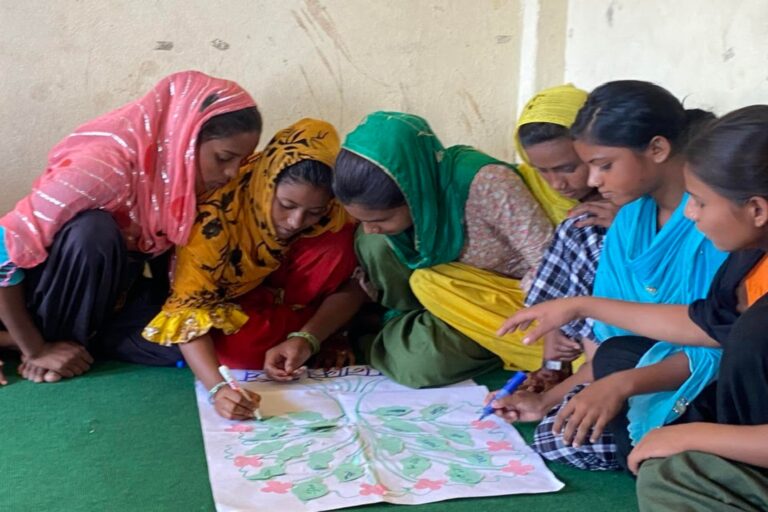By Lauren Caldwell
At leading universities around the world, introductory economic development courses follow a common structure: modernization theory, Rostow’s five stages of growth, the Harrod-Domar model, the Solow model, endogenous growth theory, the two-sector model, the Washington Consensus. By the end of the semester, students have been exposed to a laundry list of failed economic development models, with success stories few and far between.
We must radically transform the way we teach and practice economic development. To start, toss the outdated and ineffective theories—and send students to statistics class, instead.
The failures of traditional approaches to development are well-documented. In his books The Elusive Quest for Growth and The White Man’s Burden, William Easterly argues that these economic models have consistently failed to promote growth in developing countries. Policies based on the “financing gap,” a product of the Harrod-Domar model, call for rich countries to close the gap between savings and investment in poor countries with development aid. However, Easterly found that most aid was not used for investment, and investment was not correlated with economic growth.
Even economic indicators like gross domestic product (GDP), the foundation of economic development models, cannot be trusted. In his forthcoming paper for the SAIS Review, “Fast Data, Slow Policy,” Aniket Bhushan writes, “Much of the data we rely on in international affairs and international development research and analysis is fraught with problems, and is so slow that it is almost a historical caricature by the time it is published, barely descriptive about the present, let alone insightful about the future.”
Gross domestic product is published with a two-month lag and revised over a four-year period, occasionally with dramatic consequences. Ghana’s revision to 2010 data found that its GDP was 60 percent higher than originally calculated, changing Ghana’s status (and therefore its eligibility for aid) from low income to middle income. Bhushan further illustrates the implications of lagging economic indicators for development policy: “When the World Bank announced that 22 percent of the world’s population lived on less than $1.25 a day in 2012—and, consequently, the first Millennium Development Goal had been achieved—that data was four years old, dating from 2008.”
For far too long, the developing world has been victim to one-size-fits-all policies and models based on unreliable economic indicators. With technological advances and more information available than ever before, economic development policy should be immediate, responsive, customizable, and data-driven. Thus, the future of international development depends on practitioners with sophisticated data analysis skills and technical literacy.
UN Global Pulse, an initiative of the United Nations launched in 2009, is an example of the potential of economic development in an increasingly-connected world. Global Pulse uses digital data sources and real-time analytics technologies to better protect the world from socioeconomic shocks, including hunger, poverty, and disease. According to its website, “The overarching objective of Global Pulse is to mainstream the use of data mining and real-time data analytics into development organizations and communities of practice.”
Global Pulse mines data from Twitter, Facebook, birth announcements, job postings, mobile banking, online searches, satellite imagery, and user-generated maps to inform policy. For example, the Jakarta Pulse Lab searches Twitter for key words that anticipate food crises, as sudden increases in the price of staple foods (like rice) can push families below the poverty line and cause regional economic instability. With this real-time information, policymakers can anticipate shocks and immediately provide support to regions in need. Similarly, the Billion Prices Project at the Massachusetts Institute of Technology provides real-time estimates of inflation by searching online retailers for prices on a range of products, beating official inflation figures by several months.
The benefits of real-time data analysis are not limited to crisis detection and policy creation, but extend to policy evaluation, as well. Policymakers can use digital data sources to evaluate behavioral change in response to policies, and then quickly adopt course correction measures, if necessary. In Japan, the Abe government assesses the impact of policies, like changes in the sales tax, by using a custom index that mines data from online searches, rather than household surveys that require months of analysis.
Director Robert Kirkpatrick uses the term “agile global development” to describe the work of Global Pulse, borrowing a term from “agile methodology,” a reaction to traditional approaches to software development in the early 2000s. Traditional engineering methodologies were bureaucratic, resistant to change, and planning-oriented. In comparison, agile methodology is adaptive and people-oriented, with emphasis on efficiency, multi-expert collaboration, and frequent delivery of products. It is clear where traditional economic development models fit into this dichotomy.
Of course, statistical and programming skills are no replacement for the intuition that only comes from deep regional expertise, fluency in foreign languages, and hands-on experience. Sharp intuition and data analysis skills are necessary and complementary qualifications for the modern practitioner of international development. Traditional economic development models, on the other hand, are fundamentally out of touch with today’s development challenges. A continued emphasis on these models in the classroom prevents students from using their time to gain practical skills and knowledge, and may encourage them to ineffectively apply these models as professionals.
As the Millennium Development Goals conclude in 2015, academic institutions and development agencies must radically transform the way they teach and practice economic development. To design and implement an effective post-2015 development agenda, an international development practitioner must not only have a keen understanding of regional and sector challenges, but also strong data analysis skills that allow him or her to anticipate and respond to challenges as they occur in real time. Academic institutions must train this next generation of innovative, tech-savvy development practitioners. Otherwise, given the performance of economic development models over the past several decades, our likelihood of repeating past failures is almost statistically certain.
Lauren Caldwell is a second-year China Studies concentrator at SAIS. She prepared this op-ed for Neil K. Shenai’s Introduction to Economic Development course.



